Best Multitrack Recorders: 5 Incredible Options For New And Experienced Producers
So completely has the software digital audio workstation taken over home recording, hardware devices that do the job are dwindling. As we set out to find the current state of the industry for affordable multitrack recorders, it's surprising to see the five best options coming from only two manufacturers.
Both Tascam and Zoom have been in the game for years. Both have proven themselves across a range of recording platforms. These five devices serve a variety of users and recording situations. Which fits you the best? Read on and see if these address your needs.
Digital Recording Hurdles
Once upon a time, and not that long ago either, all recording was hardware recording. In the 1990s, personal computers improved in processing speed to the point that high-quality audio sampling became practical.
To match the audio resolution of a compact disk, a computer needs to sample and capture 16 bits of information 44,100 times per second. Prior to the CD, of course, analog recording used continuous electrical signals and the properties of magnetic recording tape as both capture and playback medium.
As digital technology gained in speed and storage, not only did 16-bit/44.1 kHz recording become possible, higher quality sampling developed. Today, 24-bit/96 kHz and higher are commonplace.
Storage was another issue that slowed the digitization of audio recording. Early hard disks didn't read and write fast enough to support multitrack audio. Today, of course, physical disk and solid state drives easily handle the load, and flash memory cards have grown capacity to the point these are valid storage media for audio too.
The Hardware Recording Niche
With even low-end computers capable of serious audio recording quality these days, some users may wonder why anyone would even bother with a device that only records. The answer to that may be in the interface department.
To use a computer as a recording workstation, audio input needs augmentation. Typically, there are 1/8-inch inputs and outputs on both desktop and laptop devices. These aren't suitable for interface with XLR and 1/4-inch TS and TRS connectors typically used in pro-level recording.
While built-in USB interfaces now appear in mixers at all price points, it's still not a universal feature, and not all electronic music creators use conventional mixers. Interfaces take on all sorts of shapes and formats.
Hardware recorders incorporate inputs, in most cases, so there's no need to add additional hardware. The all-in-one nature of the hardware DAW is likely the root of its appeal.
Dedicated Devices
While there's no doubt that the versatility of computers and even smartphones and tablets can bring recording into new and exciting places, having dedicated equipment provides a few benefits.
For example, sharing a computer for recording and Internet access is a typical combination for many home recording setups. This arrangement can introduce clicks and pops due to buffer overruns. These may not be apparent at the time of recording, since they frequently occur in the transfer from random memory buffers to hard disk writing.
Should, say, an email come in while recording, a great take may be compromised by such an overrun. Hardware recorders, being utterly hopeless at sending and receiving email, won't likely create such conflicts.
So, with the case made for hardware multitrack recorders, let's look at the leaders.
Our Favorite Multitrack Recorders
This list will go over our the best multitrack recorders in our humble opinion.
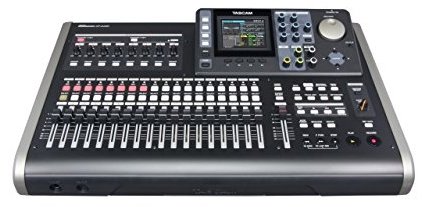
Tascam DP-24SD Digital Multitrack Recorder
Fifteen years ago, state-of-the-art in hardware DAWs mean the Roland VS-2480 and a price tag of about $4,000. While that device offered flexibility and expansion beyond what the DP-24SD offers today, the Tascam unit reduces the cost by a factor of 10.
At the time, the VS-2480 was a revolutionary package at an affordable price. The DP-24SD doesn't break new ground, but it handles the existing ground well and comes in at a price that makes it tempting to buy several.
With 18 channel faders and a single master, this is a hardware mixer's dream. Faders, lots of them. And while the DP-24SD records only 8 tracks simultaneously, overdubbing up to 24 tracks is supported without layering channel strips or sorting through data pages.
Those 18 faders divide into 12 mono tracks and 6 stereo assignments so routing output from a stereo guitar effect or keyboard synth is simple, without the need for pairing strips. While other controls switch function with the active strip, it's a surprisingly easy system to navigate.
Recording to SD cards, there's a natural divide between inputs A to H, each with an XLR/1/4-inch combi jack, and the 1 through 18 channel strips. Three-band EQ applies to both the 8 inputs and 18 strips. Effects abound, up to 10 simultaneously when mixing.
The DP-24SD even has the Great Omission from the Roland VS-2480 -- a built-in tuner. It's a little thing, perhaps, but it shows that Tascam listens and learns. There's even a 32-track version of this mixer, if 24 isn't enough. The DP-24SD is the gold standard for affordable standalone multitrack workstations.
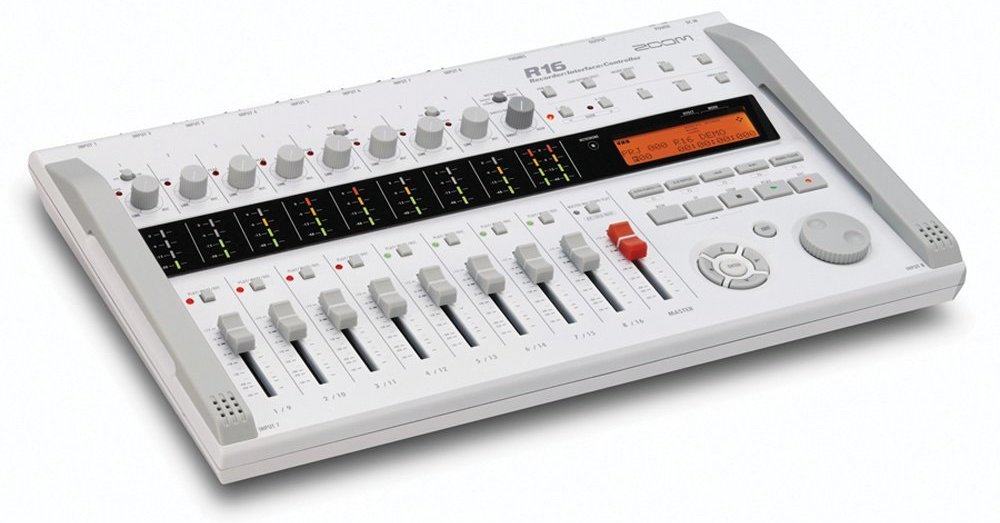
Zoom R16 Multitrack SD Recorder Controller and Interface
When discussing the drawbacks of computers as recording platforms, we pointed out that computers need beefed up audio inputs and an interface to bring analog audio into the digital domain. Clicking and dragging virtual faders is another less than optimal trait computers offer, creating the need for control surfaces.
Well, what if a multitrack hardware DAW could also serve as a USB interface into your computer as well as a Mackie-compatible control surface for your software DAW? It's instant access into both worlds, and it's just what the Zoom R16 offers.
As a standalone recorder, the R16 delivers 16 tracks for mixing and 8 tracks of simultaneous recording. There are 8 XLR and 1/4-inch combi jacks, as well as built-in stereo mics. Recording captures on SD cards up to 32 GB in size, with 135 effects, metronome and chromatic tuner. It can even run on AA batteries.
The R16 also acts as a USB interface. The 8 inputs can be mixed and sent to computer via the stereo USB output. The controls on the R16 also conform to Mackie Control parameters, so it offers control surface capability with any software DAW capable of using Mackie Control-compatible surfaces.
One Device to Rule Them All?
For someone entering the home recording scene without a clear idea of their preferred workflow, Zoom has come up with a device that keeps options open. As standalone recorder, interface and control surface in one, the R16 provides a ton of versatility. With Cubase LE software as part of the package, the R16 provides very strong out-of-box capability.
It's not, however, without a few drawbacks. The user interface is not the most friendly you'll encounter, so the learning curve will vary. Some will get the R16's logic right away while others will struggle. There's a healthy user base out there and lots of YouTube tutorials, so help is at hand.
As a control surface, if the R16 doesn't operate as you expect, it's up to the software DAW's MIDI Learn capabilities to re-map. But then, control surface operation is hardly the main selling point here.
It would have been nice to have 8-in/8-out USB interface capability, but that's hard enough to find at this price without the rest of the R16's tricks.
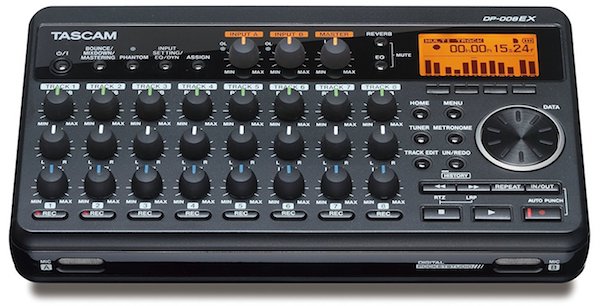
Tascam DP-008EX 8-Track Digital Portastudio
The name "portastudio" was coined by Tascam sometime around the late Jurassic period (estimated), when home multitracking meant four tracks onto audio cassettes. Since then, the company continues to create porta -- and not so porta -- portastudios. The DP-008EX is definitely in the portable range.
An 8-track device, recording two tracks at a time, the DP-008EX provides a versatile multitrack environment that's ideal for the songwriter looking for an audio sketchpad. Equipped with stereo mics, each input channel also has its own 1/4-inch jack -- switchable between line and Hi-Z guitar level on Input A -- and 3-contact XLR with phantom power.
Every playback channel has a dedicated reverb send. EQ, dynamics processing and other effects can be applied using the LCD data screen and internal menus. These aren't exotic or elaborate, but instead stick to usable workhorse tools such as de-essing and exciters.
Recording medium is SD card and file format is CD-quality WAV. Audio output includes an RCA stereo pair and a 1/8-inch headphone jack with dedicated volume.
The DP-008EX can run off an AC adapter, 4 AA batteries or Tascam's BP-6AA external battery pack. This is a recorder that's designed to be portable. Like most Tascam products of this class, the build quality of the unit seems ready to withstand some rough handling.
If you're after the studio "behind the board" feeling, look to the DP-24SD or R16. As a go-anywhere workhorse, the DP-008EX Portastudio is the best in its class, at a very affordable price.
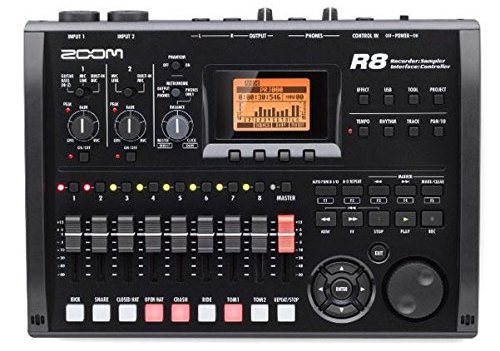
Zoom R8 Multitrack SD Recorder
Zoom once again manages to pack a wide range of features into a compact device. Compared with its big cousin, the R16, the R8 solves some of the weaknesses of the larger unit. Granted, this unit doesn't have the input options of the larger machine, but it adds some new tricks.
First, the basics. The R8 records two tracks simultaneously. Some retail sites suggest it can record 8 at a time, but with just two XLR combi jacks, 8 tracks just ain't happening, nor is 16 tracks of playback. Retail sites often combine similar models in listings, and this seems to be the case here, as the R16 specs show up credited to the R8.
That detail aside, the R8 has a much more intuitive feel to it. Signal flow is easy to follow, and like the R16, digital signal processing options abound, but they're easier to access and assign. Also like the R16, the R8 can function as a USB audio interface and software DAW control surface.
But the real fun is the trigger pads. Think of the DP-008EX as the acoustic musician's sketchpad and the R8 as the electronic music creator's version. The 9 pads along the bottom, below the faders, act as pad sampler and rhythm machine controls. Enter your own beats or trigger samples, without the need for an external device.
While the R8 is more expensive than the Tascam 8-track version, it offers a different set of features that justify the additional cost. Adding performance pads to a portable multitrack SD recorder is a great idea, perfect for on the go EDM.
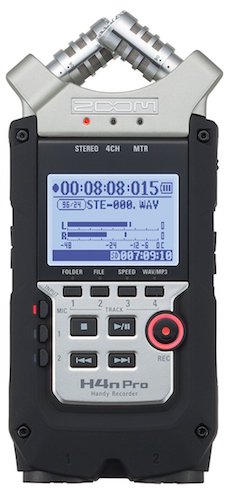
Zoom H4N PRO Digital Multitrack Recorder
The H4N recorder is a bit of an outsider in this article, but its expanded features warrant its inclusion. The handheld digital recorder niche was all but invented by Zoom. If the built-in X-Y mics look familiar, it's an arrangement that Zoom has used to great effect before.
While this is just a 4-track device, recording up to 2 tracks simultaneously, the H4N is designed to boldly go where no 4-track has gone before. Two XLR combi jacks provide input beyond the stereo mics and the unit can act as a 2-in/2-out audio interface as well.
DSP in the form of guitar amp simulators, time-based effects, compressors and limiters are all on board, recording to SD cards up to 32 GB in capacity. The rubberized body is a field producer's dream.
During a recent trial of the H4N, a solo acoustic player and singer played an inspired show at a local coffee house, captured with the Zoom recorder using the on-board mics. Thrilled with the results of the first two tracks, the singer overdubbed harmony and bass directly to the H4N, exported and mixed the tracks in a software DAW. The CD was ready in just a few days.
There's no guarantee you'll be ready for a major release party in only days, but the H4N means that the capture of high-quality audio can happen literally anywhere.
The Final Mixdown
The evolution of digital audio changes how music is created and as we've seen here, it also changes how music is captured. All of this occurs with prices plummeting. Cost is no longer the factor in creating high-quality music, as it was just a generation ago.
If you've been waiting for the right moment to try your hand at multitrack recording, or even if you're an old hand, looking for increased versatility and portability, the current breed of standalone multitrack recorders are ready and waiting.
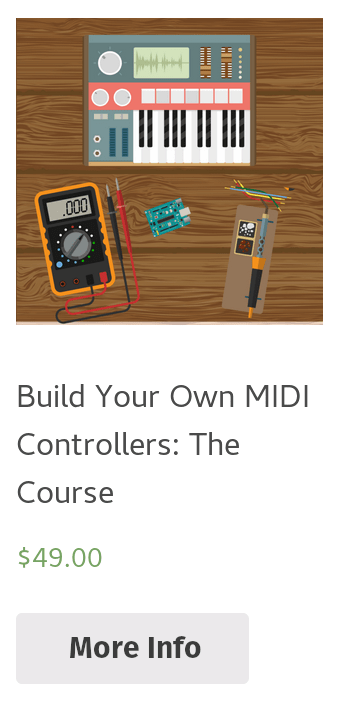
Leave a Comment